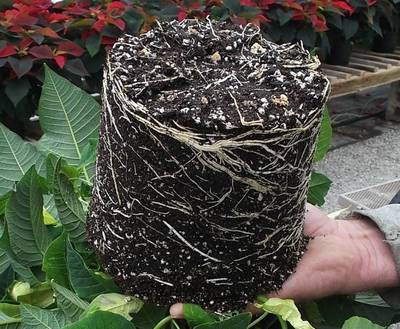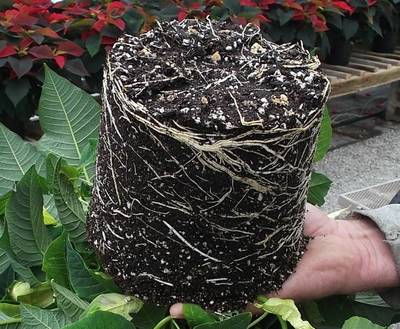Basics of Plant Respiration


The process of respiration in plants involves using the sugars produced during photosynthesis plus oxygen to produce energy for plant growth. In many ways, respiration is the opposite of photosynthesis. In the natural environment, plants produce their own food to survive.
They use the carbon dioxide (CO2) from the environment to produce sugars and oxygen (O2), which can later be utilized as a source of energy. While photosynthesis takes place in the leaves and stems only, respiration occurs in the leaves, stems and roots of the plant. The process of respiration is represented as follows:
C6H12O6 + 6O2 → 6CO2 + 6H2O + 32 ATP (energy)
As with photosynthesis, plants get oxygen from the air through the stomata. Respiration takes place in the mitochondria of the cell in the presence of oxygen, which is called "aerobic respiration". In plants, there are two types of respiration: dark respiration and photorespiration. The first kind occurs in the presence or absence of light, while the second occurs exclusively in the presence of light.
Role of air temperature
Plant respiration occurs 24 hours per day, but night respiration is more evident since the photosynthesis process ceases. During the night, the temperature must be cooler than during the day because plants can experience stress. Imagine a runner in a marathon. The runner respires at higher rates than a person standing still; therefore, a runner’s rate of respiration is higher and the temperature of the body increases. The same principle applies to plants, as temperature at night increases, the respiration rate increases and consequently temperature increases. This action could result in flower damage and poor plant growth.
Roots need oxygen
As mentioned above, roots respire too! One of the functions of the substrate is to serve as a site for air exchange between the root zone and the atmosphere. In other words, roots breathe oxygen like we do. Different plants have different oxygen requirements for their root systems. For example, the root system of a poinsettia requires a lot of oxygen, so it is best to use a substrate with high air porosity, while hostas can live well in a substrate with a high water-holding capacity. A defense mechanism for plants under waterlogged or excessively dry conditions is to grow aerial roots from the stem just above the root crown; however, the ambient relative humidity must be high to sustain root growth outside the substrate.

Ideal root zone conditions
The key to ideal plant growth is to maintain the optimum root zone environment without sacrificing finances. Did you know that roots can take oxygen from the water for respiration, although not as much as from the air? Therefore, it is important to water plants until you obtain some leachate (15-30% by volume is recommended) as this will flush out old stagnant air and exchange it for fresh oxygen. Another factor to consider is the substrate's temperature. As the temperature in the root zone increases, the oxygen concentration of the water decreases.
Importance of air in organic substrates
Root respiration is more important to consider in organic production because the root zone is full of natural microorganisms responsible for converting organic nutrients into usable ions. These microorganisms require oxygen since they work and respire too, so the substrate must maintain enough oxygen for both the roots and microorganisms. Therefore, it is a good idea to select a high porosity growing medium and to use deeper containers, because they will drain well after watering, leaving behind a good reservoir of air.
More in-depth information about plant respiration can be found in scientific literature.